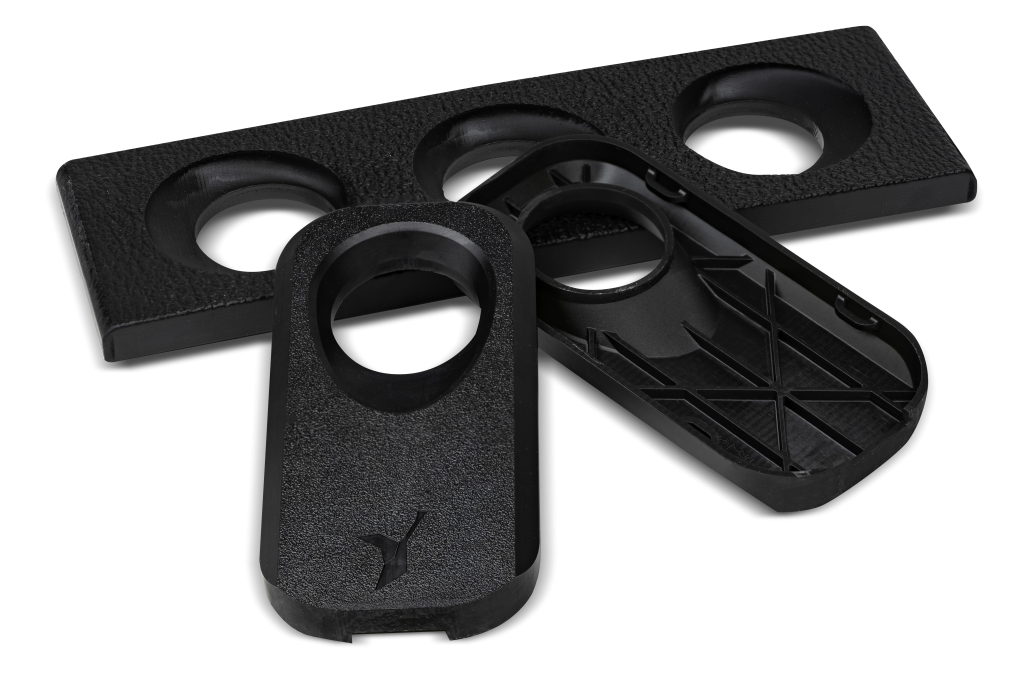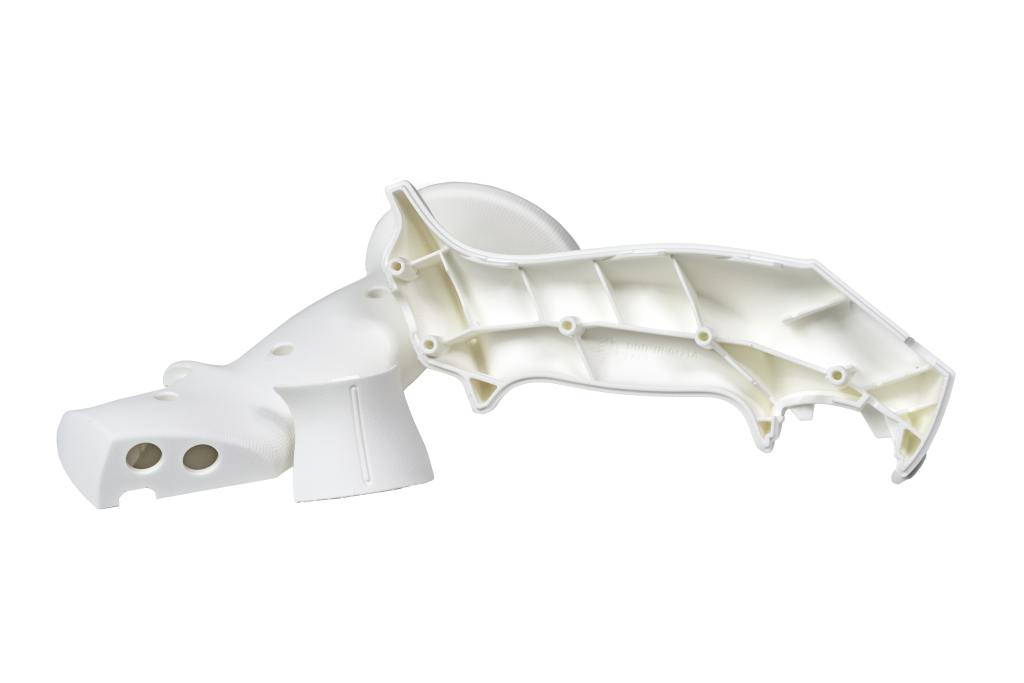3D printer manufacturer 3D Systems has added four Figure 4 resin variations to its material portfolio that it says will “revolutionize advanced production.”
Each new Figure 4 material, including the High Temp 150C FR Black, Tough 65C Black, Tough 60C White, and Rigid Gray, features either enhanced flame retardancy, strength, or biocompatibility, making them well-suited to a variety of end-use and prototyping applications in the consumer electronics, automotive, healthcare, industrial and aerospace sectors.
“These latest enhancements to our Figure 4 portfolio help our customers produce parts that not only enhance performance but improve productivity,” said Edwin Hortelano, Senior VP of Materials Engineering & Development at 3D Systems. “The combination of materials, 3D printing, software, and deep applications expertise allows 3D Systems to deliver industry-leading AM solutions.”

A flame retardant new Figure 4
With the new High Temp 150C FR Black iteration of its Figure 4 resin, 3D Systems has developed a flame retardant and halogen-free material, that’s well-suited to producing automotive and defense-related components. The ultra-rigid polymer is said to feature excellent surface quality while yielding highly-accurate parts, and it has also been certified for use within demanding electronics and aerospace applications.
At thicknesses of 2mm or 3mm, the High Temp 150C FR Black is UL94 V0-rated for producing electrical components such as Printed Circuit Board (PCB) covers and housings. Similarly, 3mm-thick parts created using the resin are U.S. Federal Aviation Regulation (FAR) 25.853 and 23.853-compliant, meaning that the material can be deployed to produce in-cabin aircraft elements like housings or panels.
Additionally, unlike many existing photopolymers, 3D Systems’ new material is capable of remaining stable for prolonged periods of both indoor and outdoor use. In fact, the company has found that parts produced using the High Temp 150C FR Black demonstrate continued functionality for eight years indoors and one and a half years outdoors, as per the ASTM D4329 and ASTM G194 standards.

3D Systems’ new Tough 65C Black and 60C White resins feature long-term indoor and outdoor stability too, but they also possess enhanced elongation, as well as impact and tensile strength characteristics. With regards to the ABS-like Tough 65C Black, its high elongation at yield of 6.6% makes it ideal for producing load-bearing parts such as brackets, covers and snap-fit fasteners.
The material is also biocompatible-capable as per ISO 10993-5, UL94 HB-rated for flammability, and its outdoor durability lends it potential automotive and consumer goods applications. In terms of the Tough 60C White, its performance is similar to that of the 65C Black, making it ideal for use within mechanical load-bearing areas, in addition to producing parts that require a high level of accuracy like wearables.
The main difference between 3D Systems’ new Tough resins is that the 60C White also features ISO 10993-10 biocompatibility, meaning that it can be sterilized without damaging its color, cytotoxicity or stability, and deployed to manufacture tools, handles and small plastic parts for use within cleanliness-critical clinical environments.

Putting the Rigid Gray into practise
3D Systems describes the final addition of its Figure 4 range, the Rigid Gray, as similar to its existing PRO BLK 10 material, in that its balance of thermal and mechanical properties lend it both prototyping and end-use applications. However, in contrast to the PRO BLK 10, the firm’s new resin is characterized by a distinctive gray color, which makes it uniquely suited to secondary processing such as painting or metal plating.
The Rigid Gray’s color is also useful for identifying text and textures on mocked-up parts, and 3D Systems’ client Decathlon is already reaping the benefits of this feature to produce several consumer sporting goods lines, including ski helmet accessories, bicycle lighting covers and athletic shoe soles.
“We are very impressed with the performance of this material and the overall productivity of the Figure 4,” said Grégoire Mercusot, a Material Engineer at Decathlon. “Out of the printer, parts display excellent dimensional accuracy and perfect quality, comparable to injection-molded plastics. The attractive grey color of the material is also ideal for highlighting fine surface details.”
3D Systems’ Hortelano added that partnering with customers like Decathlon has enabled the firm to produce its new materials with the “unique properties required” to meet their specific “application challenges.” While the company has now launched its expanded Figure 4 range, it says that they’re not expected to be generally available until the middle of June 2021.
3D Systems’ burgeoning portfolio
Back in June 2020, 3D Systems announced that it would be expanding the portfolio of compatible materials for its Figure 4 3D printer, and it has since launched a suite of new polymers for the machine. Initially, the firm released the Figure 4 RUBBER-65A BLK, Accura Fidelity, Accura Bond, Accura Patch, and JEWEL MASTER GRY materials, enabling its clients to produce enhanced industrial and jewelry parts.
Since then, the company has released its Figure 4 Rigid White resin, which features the functionality required to address the needs of its clients within multiple markets at once. Thanks to its high heat deflection point, elongation at break and biocompatible capability, the material has broad clinical, electronic and consumer goods applications.
Leveraging the expanded capabilities of the Figure 4, customized hearing protection manufacturer ACS Custom has been able to ramp-up the production of its hearing aids. Adopting 3D Systems’ machine has allowed the company to prototype around five product iterations per day, while using 50% less material to do so.
To stay up to date with the latest 3D printing news, don’t forget to subscribe to the 3D Printing Industry newsletter or follow us on Twitter or liking our page on Facebook.
For a deeper dive into additive manufacturing, you can now subscribe to our Youtube channel, featuring discussion, de-briefs, and shots of 3D printing in-action.
Are you looking for a job in the additive manufacturing industry? Visit 3D Printing Jobs for a selection of roles in the industry.
Featured image shows an engineering operating a row of 3D Systems’ Figure 4 3D printers. Photo via 3D Systems.



